When you’re pushing 40 and you read Facebook status updates from people roughly half your age who identify as or are involved with punk rock/DIY ethics and culture, you learn that engaging with that demographic is like negotiating a field covered in eggshells, themselves made out of glass, beneath which glare the unblinking diodes of conversational mines, themselves armed and primed to explode at the slightest malapropism or contrary opinion. To be clear, that’s my own opinion and not one shared or promoted by this paper. I swear I’ve never been one to call someone a snowflake, but I did learn how pissed people can get if you say something about their passion that is anything other than a glowing endorsement. That lesson truly dawned on me a few years ago, after I wrote a Last Call column about a local watering hole in which I also mentioned a certain Near Southside DIY space.
In that column, I mused about how, as an aging, drunken stoner (at the time, anyway – I’ve been sober since December 2017, though the aging part is in full effect), I felt more comfortable watching bands play at 1912 Club rather than the all-ages, intoxicant-barring community resource center across the street, popularly known by its address, 1919 Hemphill. 1919’s fans were not pleased, and the Facebook commentariat’s response was hot and furious, its invective raining upon me and my column like so much radioactive fallout. After a couple days of reading all that, I gathered that my most egregious offenses were getting the wording of 1919’s anti-intoxicant policy wrong – I said “no drunks, no drugs, no jerks,” when it is explicitly stated as “no booze, no drugs, no jerks” – and that I asserted, apparently erroneously, that 1919’s shows were “for the kids.” I also got in trouble for pointing out that I heard people speaking Spanish, which, as a white guy, you’re not supposed to do. Obviously, I should’ve known better and left all details to the imagination of the reader. Consider me forever toxic, irradiated, and defeated by the righteous indignation of a couple hundred people who follow news about Pussy Riot religiously.
But in my defense, when you’re of a certain age (which I’ll arbitrarily set at 25), anyone who isn’t old enough to drink at a bar is still kind of a kid. I know this not only because I am well over 25 but also because the very same year that I wrote about 1912 and 1919, I went to an after-party following a show at Dan’s Silverleaf in Denton (a city where the artistic community’s vibe is like if 1919 Hemphill were the size of a small town) where I overheard two women, both 25, complain about some other women specifically because they were under 21 and behaved in a way endemic to being that age. I acknowledge that that’s an incredibly small sample size by which to judge an entire age group, but at the very least, my opinion is shared by at least two other people in the world.
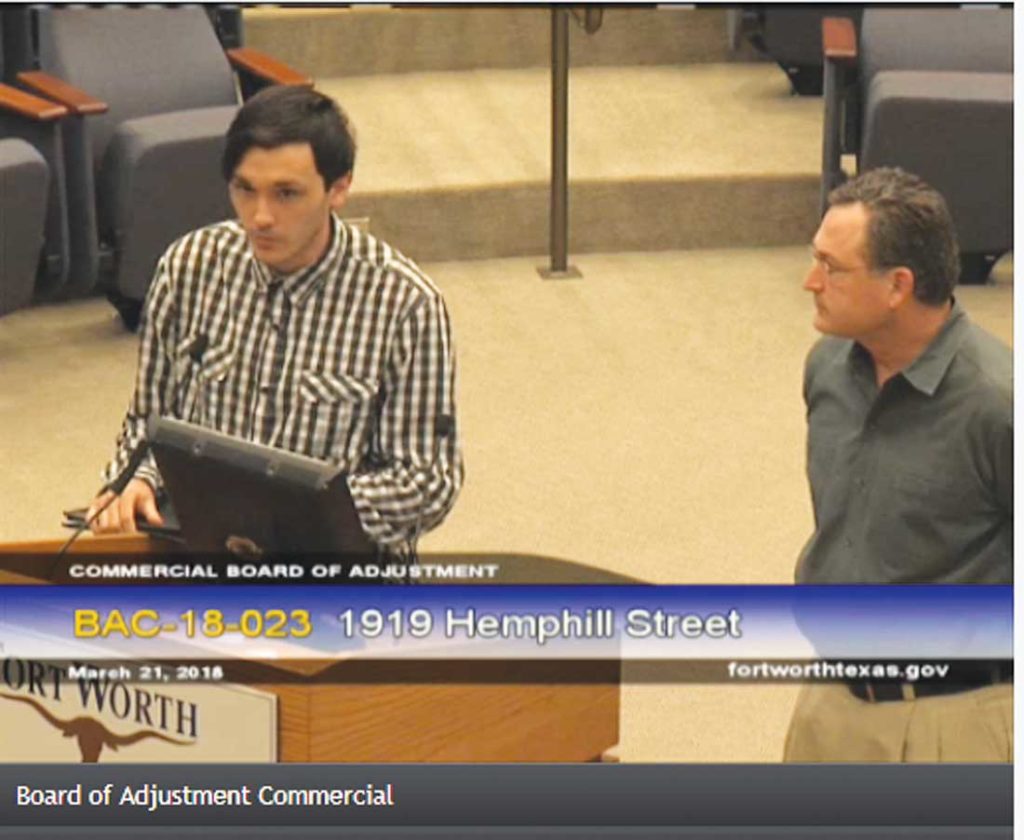
Courtesy of 1919 Hemphill Collective
Now, granted, everyone knows that people become legal adults at age 18, and they are therefore entitled to do a host of adult things like vote, buy cigarettes, buy copies of Playboy, buy a firearm, rent an apartment, and enlist in the military, all of which require roughly the same level of grownup responsibility as legally purchasing and imbibing alcohol, which everyone also knows is permitted at the age of 21. Related to the degrees of privilege granted at various birthday milestones, my understanding of 1919 Hemphill was that it was an all-ages venue that often (or “usually” – I feel like “usually” is more appropriate, but again, glass eggshells over a minefield) held early shows, perhaps out of respect for concertgoers with curfews, and those parameters were most accommodating for people not old enough to legally enter a bar. Since my tone for all of the Last Calls I wrote could be generally summarized as “drunk guy goes to a bar and tries to remember if something funny happened,” I was really shooting for laughs. Hidden under all my whiskey-and-weed-addled cynicism was the idea that people eventually age out of straight-edge shows and start going to ones at bars, but that was not particularly funny to most of the people who go to 1919, and by “particularly,” I mean “at all.”
Even worse (to me, anyway), I got the impression that I’d offended Clear Acid, a heavy, psychedelic rock band that had played 1912 that night. Compared to what I felt was an increasingly stale Fort Worth music scene, Clear Acid’s performance was a breath of fresh, beautifully nightmarish air, and I’d devoted nearly 100 words of that column (about 1/7th of the word limit) describing what it was like to watch them. But over the ensuing weeks, I also got the impression that they were pissed that I’d thrown even the slightest bit of shade at 1919, torpedoing any chances I may have had of interviewing them for a story in the Fort Worth Weekly. (I still remember that show and think it was one of the best live music experiences I’ve ever had. But insert shrugging-shoulders emoji, I guess.) After asking around the neighborhood, the general consensus I received was that the people who ran around and hung out at 1919 felt like the Weekly habitually got details wrong, and my gaffe(s) were just the latest in a long line of journalistic misrepresentation. I thought that was a bummer, because for all my old-guy snark, I have always believed that all-ages spaces are vital, not only to a city’s music scene but to its overall cultural impact and import.
Sorry/not sorry I took that long to get to that point, but if there’s one thing I enjoy (there are, in fact, several things I like, maybe even five or six), it’s challenging myself to bury ledes deeper and deeper each time I open a Word doc. In this case, the lede might as well be adjacent to the earth’s core, but anyway, yeah, DIY spaces are super-important, for lots of reasons. For one thing, they give people something to do other than sit at bars staring at TVs. For another, they open avenues to forms of artistic expression that may otherwise remain in their creator’s garage, bedroom, or imagination, as well as left-leaning, alternative thinking and ideological dialogue, which in turn foments progressive change. They also provide a scene for those who don’t fit into other scenes, and they’re frequently more interesting (or at least weirder) than the venues most people visit to see live music.
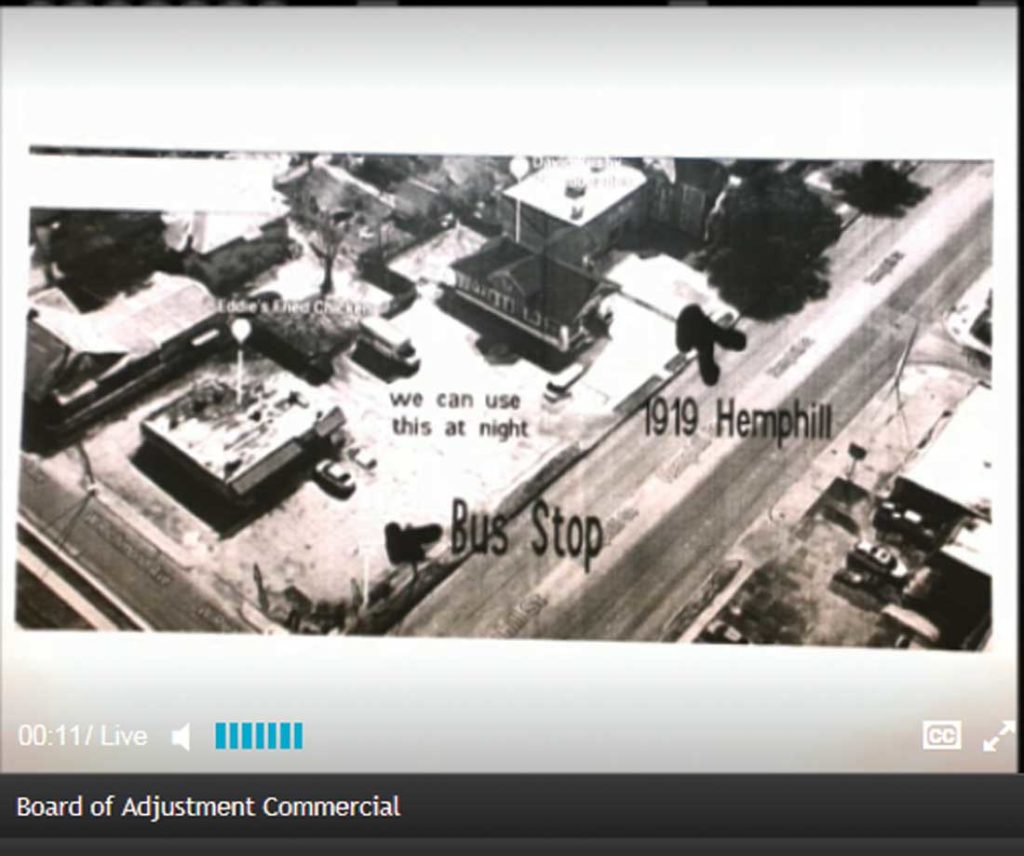
As far as I know, 1919 Hemphill does all of those things. Because the space promotes inclusiveness and a safe, drug-and-booze-free environment, it is a great incubator not only for culturally relevant, liberal-minded community activists but also for young musicians and fans who might not otherwise get to see live music (not to mention the kind of outré bands that can’t or won’t play mainstream clubs or bars). Musicians and fans are what keep scenes alive, and if they become involved in their teens and early 20s, they will likely hang around for years. So while the city and its private sector might blow hundreds of thousands of dollars on a fake saloon and an F-35 cockpit simulator to convince SXSW crowds that Fort Worth is a cool place to be, I argue that entities like 1919 are what actually make Cowtown more than the sum of its parts. Yes, there’s good barbecue here. Yes, there are country artists worth hearing. Yes, a local factory is producing one of the most expensive and sophisticated weapon systems the human race has ever thought up. But there’s also a place in Fort Worth with graffiti covering the walls and Noam Chomsky lining its bookshelves, where teenagers can hear a grindcore band from Idaho and a synth-wave duo from New York play before their friends’ folk-punk project. Which story do you think resonates more with the outside world?
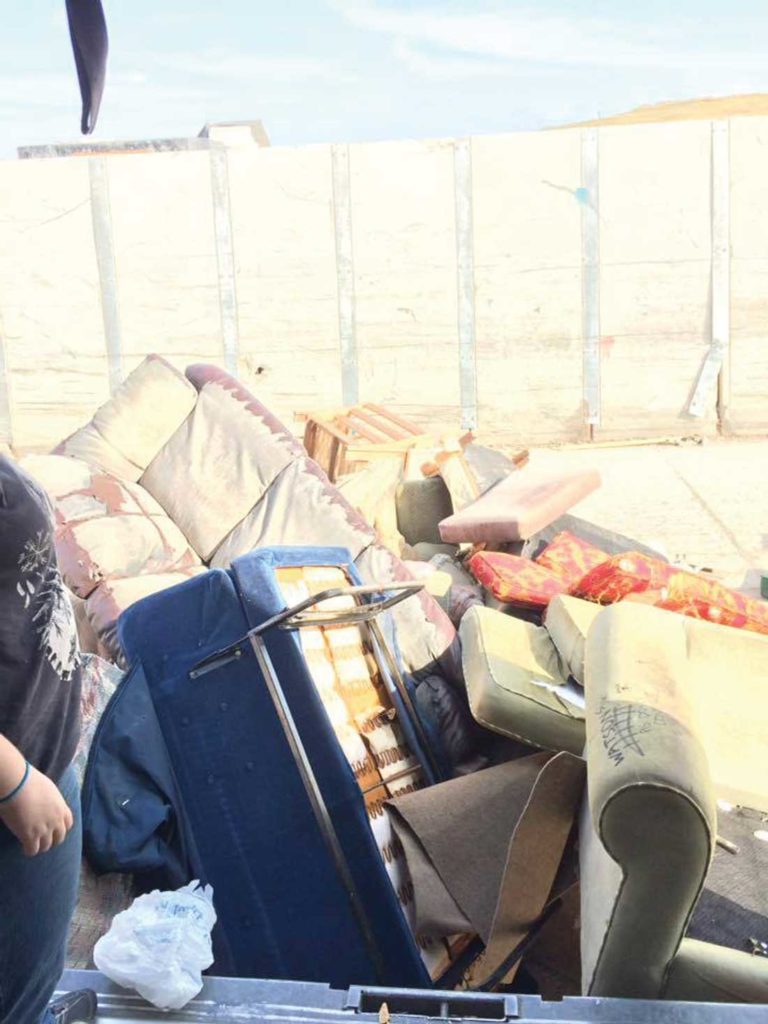
Courtesy of 1919 Hemphill Collective
I guess it depends on who you’re talking to. Since we are all stuck enduring life in the United States of MAGAstan, brisket and jet fighters are probably a hotter pitch than experimental noise bands for a dismayingly large swath of the populous. But if you ask me, 1919 Hemphill is as crucial to Fort Worth’s cultural landscape as the Kimbell Art Museum, the Stockyards, and Lockheed Martin. Yes, Lockheed Martin does affect this city’s culture, and, yes, I did type all that with a straight face. But per the trigger warning at the top of this and my past experience writing about the organization, I wanted to get the facts right, because while I’m accustomed to scraping egg off my face, I’d rather just eat it on toast, poached, with Tabasco and lots of pepper. But for whatever reason, 1919 doesn’t seem exactly keen on media coverage (or eggs either, probably). Perhaps this is because 1919’s story has been told in this space already – seven years ago, in “Evolving at 1919” by Jimmy Fowler – but, more likely, because some of the details were fudged or whiffed (mea culpa), or the space and its organizers didn’t think they were taken as seriously as they take themselves. Additionally, the space has been closed for a long time, due to some issues with the city and the property owner over the building’s zoning. Here’s the newsworthy part: The space is reopening at a date to be determined. And that’s ultimately what I wanted to write about, so, despite whatever misgivings its organizers felt, they were open to talking to me about 1919 opening its doors and hosting shows again. Though they declined my request for an in-person interview, they agreed to answer my pre-submitted questions as a collective. I snipped a little for length and mechanical clarity, but the collective’s answers are below in their own words. The exchange occurred over Facebook Messenger.
Weekly: Let’s assume this article is gonna be read by someone like my mom, who has no idea what “the 1919 Hemphill Space” is. What is its official name, when did it open, and what happened to it to force it to cease holding events (what I think of as “being in limbo”)? When was that?
1919 Hemphill’s Collective: 1919 Hemphill doesn’t have a name because the idea is that it can be whatever you wanted it to be. 1919 is a place where people can come together as a community or as an individual to express themselves. 1919 predominantly is known for the shows it has hosted for local and touring bands. This space opened in October 2002. 1919 stopped holding events to ensure the compliance of the facility with City of Fort Worth regulations. No events have been held here, as 1919 volunteers had to submit site plans to update the building to be in compliance, which has taken time as the city review process and approval can be and has been lengthy. It is important to also note 1919 exists not as a business-oriented, for-profit venue. Within 1919, there is a scene for bands that can’t play anywhere else. This is for bands who wish to play places that aren’t bars or nightclubs. The unapologetic no drug/no booze/all ages also plays a significant role in the community and is what separated it from being a market/competition style venue
What was the issue with the zone variance, what is it now, how was it resolved, and by whom?
Parking was the issue with zone variance. We needed a crazy amount of space in a part of the city where that doesn’t happen. We had to add a bike rack, and parking logistics had to change. It was originally only a minor inconvenience but then the issue was brought before the board due to the type of facility we exist as. The board approved our current parking spaces we have been using. One positive that has come from this, though, is adding handicap parking spaces, which expanded accessibility to the space.
What code requirements need to be met, and how are you meeting them? Who is paying for them? Once it’s up to code, when will shows and other events begin again?
Code requirements included the zoning variance, which we received approval on. And adding an additional restroom and moving events to the downstairs area. Mostly internal construction is what we are waiting on. Updates, though, will be publicly shared via our Facebook.
Does 1919 get any city, state, or federal money?
1919 operates predominantly on community donations. Since being closed to the public, money has come from [crowdfunding site] Indiegogo as donations.
Who is 1919 for, and how does it reach that audience or community and/or meet its needs? How does a person get involved with 1919?
1919 is a facility that fosters ideas/initiatives and expression. It reaches its audiences mostly by word of mouth. Shows are advertised also via a Facebook account. For anyone getting involved with 1919, we have held open clean-up days … an open invitation for anyone to show up. Other ways to get involved is through volunteer outreach. At this time, the main goal is reopening, and as soon as we open, we hope to bring on new people with different thoughts and fresh ideas!
Do you think this is a new chapter for the space, and, if so, has the mission statement evolved? Was there internal disagreement in the collective about either the space’s direction or lack thereof (if it is maintaining the same trajectory as before)?
No internal disagreements, and our main goal since closing was always to open back up as our No. 1 concern. It will only be a new chapter, as facility changes had to be made, and now new bands and new people will be in attendance, hopefully, for our future opening. 1919 will always be a place to express yourself, meet people, and make things. These are things we all truly need. 1919 fills the void in a very special unique way for those local and willing to pass through the Fort Worth area.
In the past, the space has sort of flown under the city’s cultural radar. But considering that the city’s music scene has gained a higher profile (and, yes, I’m mostly attributing this to Leon Bridges’ success) and its art scene has become more democratic and easier for unknown creatives to participate in, does 1919 aspire to participate or partner with other similarly creative-oriented entities or institutions, or does the collective’s programming prefer to be insular and/or of and for itself and its own audience?
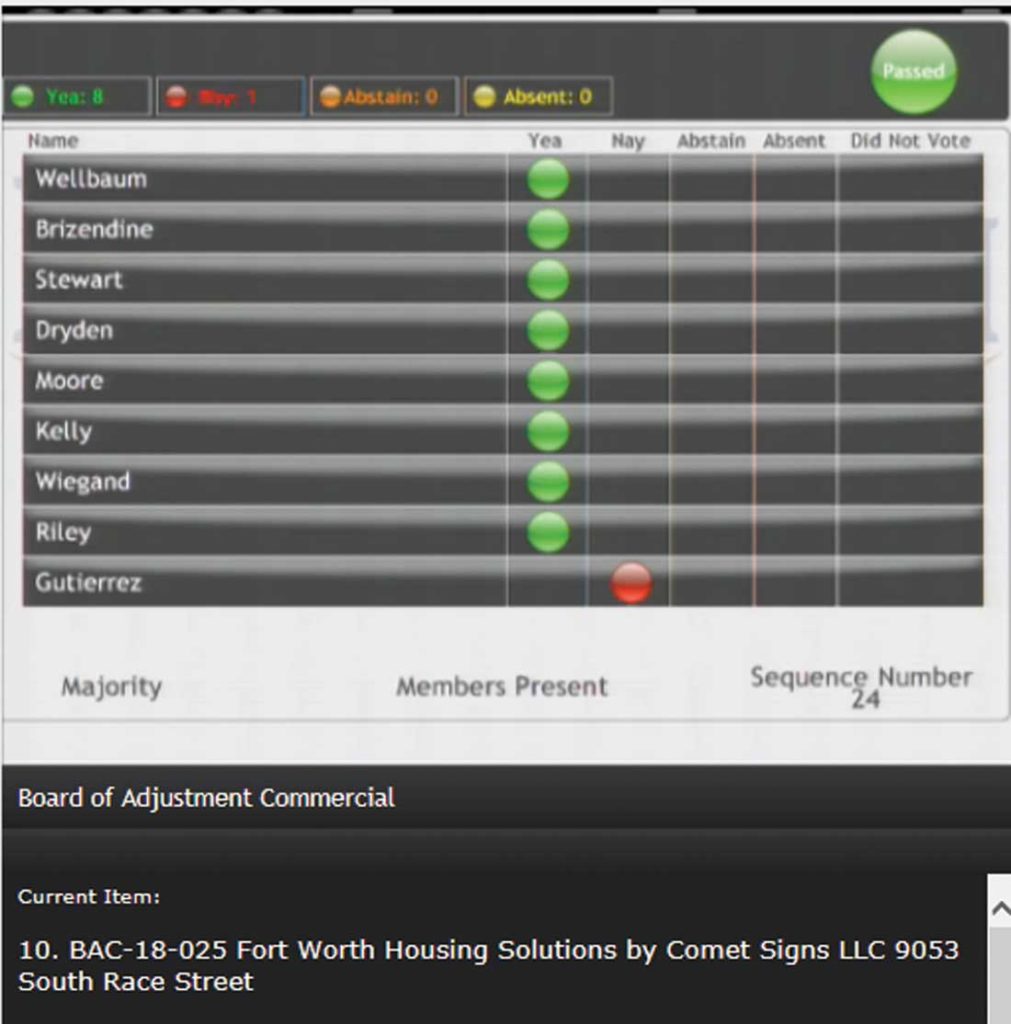
They provided no answer for that one and politely refused my subsequent request to answer further questions. And as far as I learned, they don’t yet have a reopening date, though their Facebook update from March 21, 2018, that announced their recently approved zoning on variance estimated 1919’s leaders could receive their certificate of occupancy in as few as two weeks. For a journalist, even one as half-baked and less-informed as myself, that’s a frustratingly scant reply. But then again, maybe I’m not supposed to be in the know about this stuff. Maybe I’m supposed to remain out of touch, and maybe, as much as the collective professes otherwise, maybe 1919’s scene isn’t actually for people like me. But that’s OK, because people like me aren’t changing the world anymore, at least not in the way the 1919 Hemphills of the world are trying to. Hopefully, the reopened space will have an even bigger effect on the city of Fort Worth. I guess it’s up to the kids – I mean, “people” – who walk through 1919’s doors. l



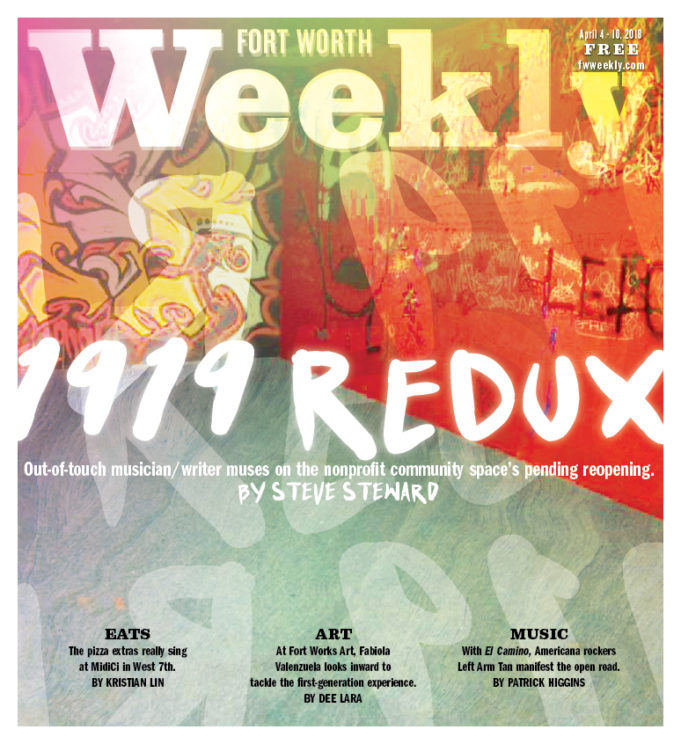









Should be called 1917 instead.
As an ex 1919 volunteer I feel like I should mention we all liked Jimmy Fowlers article. We also really liked Jimmy Fowler. We also thought Marioni’s editing where he replaced Hannible Burres’s name with Raging Boner.
Glad you liked Jimmy’s story. We did too. Second, my name is spelled “Mariani.” Lastly, I didn’t edit Jimmy’s story. Gayle Reaves did. Thanks.
Jim, 1917 Hemphill is actually a law office. Hope this helps.
Steve Steward has been one of my favorite music writers over the years, but sorry, this was pathetic. An article that was supposed to be about 1919 Hemphill but instead started with paragraph after paragraph of thin-skinned whining about how mean the 1919 snowflakes were to the poor old clueless old guy. (Talk about a snowflake!) FYI, nobody gives a shit about your personal grievances and experiences with 1919 (other than your friends and family i guess), what we wanted was an update on 1919, and I imagine most people just stopped reading before the article ever got around to that. Why in the world would the Weakly send somebody with such an axe to grind and shitty opinion of young people to write this article? Oh yeah, for the same reason they sent someone who thought women couldn’t rock to review women in bands. A town with this badass a music scene deserves an alternative paper that is capable of covering it without all the sexism and now ageism. So messed up.
Thanks for the kind words, Chas, and speaking of kind words, I really did have good intentions when I wrote that piece, because I thought the public would be interested in whatever progressive ideas or potential the space’s organizers had for the future, and erroneously believed they would appreciate the extra coverage. But they only wanted to focus on reopening — so much that one volunteer told me after the article was published that my asking what they planned for the future was irrelevant — and chose to provide answers to one interview only. I maintain that a progressive-minded community space like 1919 purports to be is a vital component of a city’s culture and (hopefully) politics, but at this point, I get the impression that all they are interested in is hosting shows. If that isn’t the case, maybe they can provide more information to someone else another time. Or not. Only 1919 Hemphill knows what is best for 1919 Hemphill.
Thank you for the thoughtful reply. I appreciate your intentions and trust that they were good, and in general I appreciate your coverage of this amazing music scene. I just think that given your past w/ the venue and the controversy, it would have obviously been much better to have someone else do this story. I assume their reticence to answer was based on the previous experience, so after you saw the resistance the Weekly had a second chance to figure it out and let someone else do the story. (And I’m not saying you were wrong and they were right on the original story, just that since it did go the way it did why not let someone without that baggage approach the story fresh?) Maybe that would have made a difference, and the Weekly would have gotten more info, and the readers would have gotten more info. As it turned out we got very little from 1919, and instead the article itself started with paragraph after paragraph of a rehashing of your personal beefs with them, which I’m sorry just doesn’t in any way seem newsworthy, much less front cover worthy, much less a replacement for what we agree could have been an useful article about a place many people in Ft. Worth see as important. Sometimes it’s better to realize the story you hoped would be a good one turned out to be a dud, and move on to something else, so as you suggest, “they can provide more information to someone else another time.” That time could have been now, or at least sooner than it will no doubt be now, at least through the Weekly.